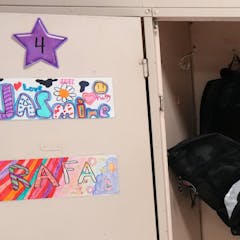
Articles on School
Displaying 1 - 20 of 373 articles

Not all teachers comply when asked to adjust student grades. An education scholar takes a look at what happens when they don’t.

Since COVID there has been an expansion in online options for school students. This includes individual classes and complete distance education.

If the ban on girls’ education in Afghanistan persists, consequences could include higher rates of abuse, the spread of extremism and billions of dollars in economic loss.

Kindergarteners’ literacy and active play are both grounded in the science of learning.

School food can connect people powerfully to their local lands, resources and economies, and be a tool towards reconciliation with Indigenous communities.

Researchers and co-chairs of the Canadian Association for Food Studies’ School Food Working Group explain what Ottawa should prioritize to ensure its national school food program succeeds.

Four Canadian school boards are suing social media giants. This comes as 95 per cent of Ontario schools report needing more resources to support student mental health.

Four Ontario school boards have filed a lawsuit against social media platforms to force them to change practices that harm schoolchildren.

Alberta’s new social studies curriculum misses the mark on child development, lacks adequate opportunities for critical thinking and neglects teaching about colonization.

New research finds teachers tend to have tailored approaches to help students performing below standard, but not for their gifted peers.

Developmentally progressive instruction allows children to learn handwriting. An open-educational resource by literacy and writing experts supports instruction for kindergarten to Grade 3 children.

The federal and NT governments have just made a ‘historic’ funding announcement of about $1 billion for schools in the territory.

Students are provided the opportunity to use America’s national parks as case studies for environmental issues and tough conversations in this course.

Our study suggests the evidence for banning mobile phones in schools is weak when you look at the impact on academic results, student wellbeing and cyberbullying.

Next week, Australian schools will begin NAPLAN tests for students in years 3, 5, 7 and 9.

A study of newcomer Latin American and Black Caribbean parents in Ontario schools found many parents felt excluded from processes surrounding assessments for their child’s learning needs.

Louisiana’s governor made it easier for companies to receive property tax breaks – and schools will likely pay the price.

Bilingual education can improve learning outcomes but it’s important to consider local context.

Additional research and attention is needed — particularly in Canada — to provide schools with evidence-based, trauma-informed and culturally attuned approaches to school discipline.

Multiplication facts typically describe the answers to multiplication sums up to 10x10. They are called “facts” as it is expected they can be easily and quickly recalled.
